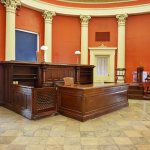How Do You Prevent Slips and Falls?
Slips and falls are among the most common accidents that can lead to serious injuries. Preventing slips and falls is crucial for ensuring safety in various environments, including homes, workplaces, and public spaces. According to statistics, millions of people suffer from slip and fall accidents each year, leading to significant medical expenses and lost productivity. This article aims to provide a comprehensive guide on how to prevent these incidents and maintain a safe environment.
Understanding the Causes of Slips and Falls
To effectively prevent slips and falls, it is essential to understand their common causes. Wet or slippery surfaces are a primary culprit, often resulting from spills, rain, or cleaning activities. Uneven flooring, such as loose tiles or rugs, can also contribute to accidents. Poor lighting is another significant factor, as it can obscure hazards and make it difficult to navigate spaces safely. Cluttered walkways, with obstacles like boxes or cables, further increase the risk. Different environments, such as homes, workplaces, and public places, have unique risk factors that need to be addressed.
Preventive Measures for Home Safety
Maintaining a safe home environment is the first step in preventing slips and falls. Keeping floors clean and dry is paramount. This includes promptly wiping up spills and ensuring that wet areas, like bathrooms and kitchens, have non-slip mats. Installing non-slip rugs and mats in high-traffic areas can provide additional traction. Proper lighting is also crucial; ensure that all areas of the home are well-lit, especially staircases and hallways. Securing loose cables and cords can prevent tripping hazards. Regular maintenance and repairs, such as fixing loose tiles or floorboards, are essential for keeping the home safe.
Workplace Safety Protocols
Workplace safety is a shared responsibility between employers and employees. Implementing comprehensive safety training programs can educate employees about the importance of preventing slips and falls. Safety guidelines should be established and enforced, including the use of appropriate signage for wet floors and other hazards. Regular inspections and maintenance can identify and address potential risks before they cause accidents. Providing employees with proper footwear, such as non-slip shoes, can also significantly reduce the risk of slips and falls.
Public Spaces and Commercial Establishments
Ensuring safety in public spaces and commercial establishments is vital to prevent slips and falls. Property owners and managers play a crucial role in maintaining these areas. Floors should be kept clean and dry, with immediate attention given to spills and wet conditions. Installing handrails and guardrails on stairs and ramps provides additional support and stability for visitors. Proper maintenance of walkways and stairs, including timely repairs of any damages, is essential. Adequate lighting in public areas helps to illuminate potential hazards and ensures that visitors can navigate the space safely.
Special Considerations for the Elderly and Disabled
Elderly and disabled individuals are at a higher risk of experiencing slips and falls due to various factors such as reduced mobility, balance issues, and vision impairments. Home modifications can enhance safety for these individuals. Installing grab bars in bathrooms, using non-slip mats, and ensuring that walkways are clear of obstacles can make a significant difference. The use of assistive devices, such as canes or walkers, provides additional stability. Regular health check-ups can help identify and address underlying conditions that may increase the risk of falls.
Legal Aspects and Liability
Understanding the legal aspects and liability related to slip and fall accidents is important for both property owners and victims. Premises liability laws hold property owners responsible for maintaining a safe environment. If an accident occurs, it is crucial to document the incident and gather evidence, such as photographs of the hazard and witness statements. This documentation can be vital if legal action is necessary. Consulting a discount retailer injury attorney can help victims understand their rights and navigate the legal process.
Conclusion
Preventing slips and falls requires a proactive approach and a commitment to maintaining a safe environment. By understanding the common causes of these accidents and implementing preventive measures, individuals and property owners can significantly reduce the risk. Regular maintenance, proper lighting, and the use of non-slip materials are key strategies. Special considerations should be made for the elderly and disabled to ensure their safety. Awareness of legal responsibilities and the steps to take after an accident can also provide important protection. Taking these proactive steps can help create a safer environment for everyone.
Additional Resources
For further information on slip and fall prevention, consider reaching out to safety organizations and local authorities. They can provide valuable resources and guidance tailored to specific environments. Additionally, reading materials on safety protocols and best practices can offer more in-depth knowledge on how to maintain a hazard-free space.
More to Read:
Previous Posts:









